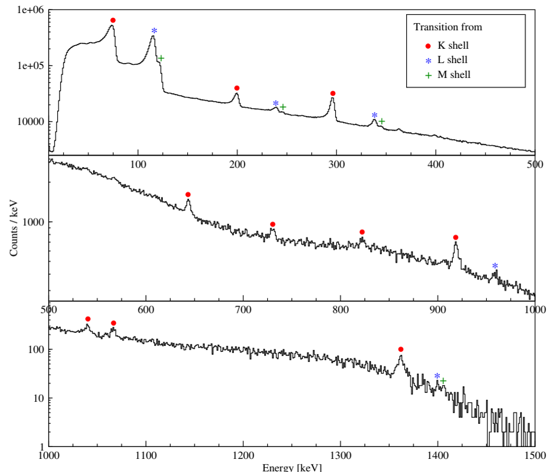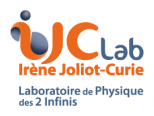
The new experimental setup COeCO designed for the study of β-delayed conversion electrons emitted by neutron-rich nuclei produced by ALTO (Orsay), has recently been built, assembled and tested. The system features two magnetic coils (in red in the left picture above and grey in the right one) in order to transport electrons from the collection point of the radioactive beam towards a Silicon-Lithium detector cooled down with liquid nitrogen. This design allows to study much shorter lived nuclei than with the older decay station, and helps to reduce the background coming from γ-rays emitted by the source.
The very first off-line tests were performed last February with a 152Eu source placed directly inside the system in order to carry out the calibration of both the γ and electron detectors without breaking the vacuum in the chamber. Although transitions in 152Eu are poorly converted, we can still very clearly identify them in the spectrum obtained with the Si(Li) junction. Thus, a 152Eu source not only allows to calibrate the germanium detector but also the junction. In addition, contrary to the widely used 207Bi, it covers the whole energy range accessible with the detector, especially on the low-energy side where not only K-lines, but also L and even some M-lines are visible.

The first on-line tests will be performed next June at ALTO and the first physics experiment will take place right after the tests with a 82Ga radioactive beam.
Contribution by Guillem Tocabens






